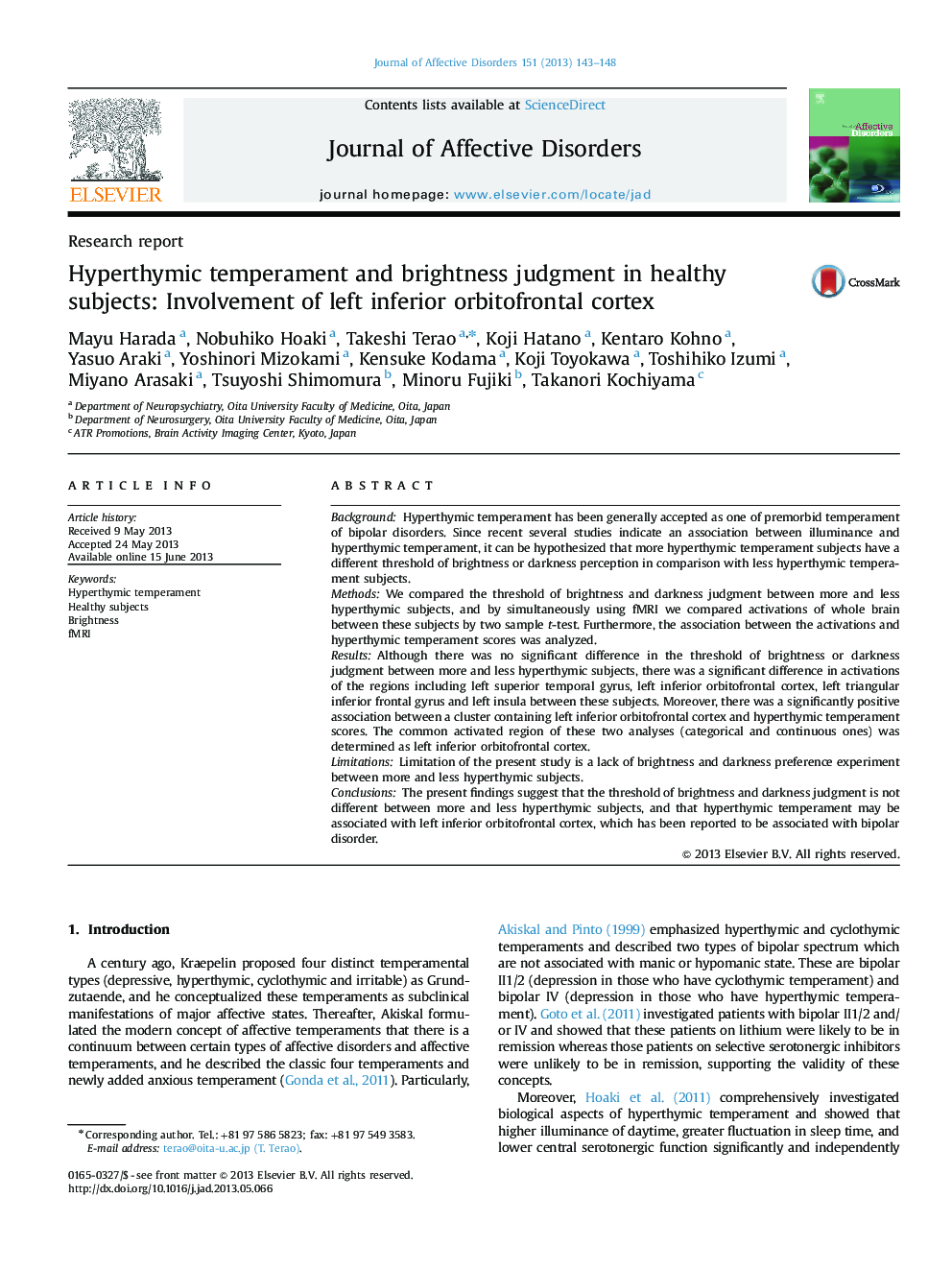| Article ID | Journal | Published Year | Pages | File Type |
|---|---|---|---|---|
| 6234053 | Journal of Affective Disorders | 2013 | 6 Pages |
BackgroundHyperthymic temperament has been generally accepted as one of premorbid temperament of bipolar disorders. Since recent several studies indicate an association between illuminance and hyperthymic temperament, it can be hypothesized that more hyperthymic temperament subjects have a different threshold of brightness or darkness perception in comparison with less hyperthymic temperament subjects.MethodsWe compared the threshold of brightness and darkness judgment between more and less hyperthymic subjects, and by simultaneously using fMRI we compared activations of whole brain between these subjects by two sample t-test. Furthermore, the association between the activations and hyperthymic temperament scores was analyzed.ResultsAlthough there was no significant difference in the threshold of brightness or darkness judgment between more and less hyperthymic subjects, there was a significant difference in activations of the regions including left superior temporal gyrus, left inferior orbitofrontal cortex, left triangular inferior frontal gyrus and left insula between these subjects. Moreover, there was a significantly positive association between a cluster containing left inferior orbitofrontal cortex and hyperthymic temperament scores. The common activated region of these two analyses (categorical and continuous ones) was determined as left inferior orbitofrontal cortex.LimitationsLimitation of the present study is a lack of brightness and darkness preference experiment between more and less hyperthymic subjects.ConclusionsThe present findings suggest that the threshold of brightness and darkness judgment is not different between more and less hyperthymic subjects, and that hyperthymic temperament may be associated with left inferior orbitofrontal cortex, which has been reported to be associated with bipolar disorder.
